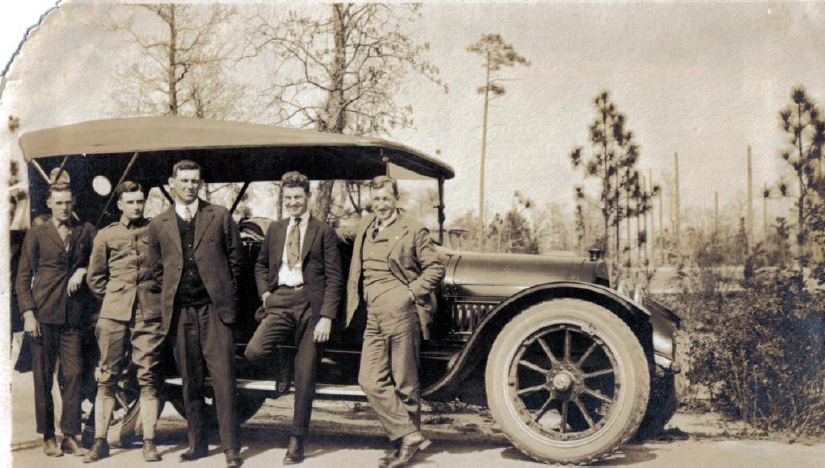Automobiles
While the automobile was developed in the very early 20th century, the lack of paved roads delayed its arrival in many areas of the country. The first “roads” were cut through Stafford’s forests in the 1600s, but these were little more than trails wide enough to walk on or ride a horse over. As more people settled in the county, roads were cut to link the ferries, churches, and courthouse. The next road building effort cut roads, again little more than trails, that connected one plantation to another and plantations to wharves where tobacco and other crops could be shipped out and goods from England and Europe brought in. The county court appointed Overseers of the Roads who were responsible for keeping the road near their home open. This usually meant chopping fallen trees out of the road and draining mud holes. Sometimes steams had solid bottoms and were used as roads. Rocky Run in the northern part of Stafford is one such example. Several miles of this stream were used as a county road for nearly three centuries and ruts from wagon wheels remain in it to this day.
These early roads were of dirt. Rarely, if ever, was gravel put on them. Consequently, when it rained or snowed, they became extremely muddy and often impassable. It wasn’t uncommon for the mud in these roads to be two to three feet deep, making it impossible for horses or wagons to use them.
During the Civil War, when the Union army attempted to move south from Washington towards Fredericksburg, they were unable to get their wagons through Chappawamsic Swamp, the present boundary between Stafford and Prince William counties. They were forced to go west and come along the Warrenton Road (now U. S. Route 17) instead.
The first paved road in Stafford was U. S. Route 1. In the 1840s this old trail had been somewhat improved and the telegraph line had been strung on poles along its length. It was long called the telegraph road and parts of it still retain that name. In the early 1920s the telegraph road was paved with concrete. This was Stafford’s first paved road. Shortly thereafter, the Warrenton Road (now U. S. Route 17) was also paved with concrete. These remained the only two paved roads in the county until the early 1940s when a few more were done in response to the expansion of the Quantico Marine Corps base.
The lack of paved roads made automobiles impractical for most people. The mud and deep ruts made getting stuck inevitable and often caused serious damage to the vehicles. Some of the first people to have cars in Stafford were Dr. Hawkins Stone (1816-1903), Dr. John Churchill Gordon (1871-1949), and Dr. Edgar Morris Sneed (1856-1932).
S. Route 1 ran from Maine to Florida and, once paved, invited people from all economic levels to explore beyond their own immediate areas. Henry Ford’s assembly lines made automobiles affordable for the general public and road trips became the rage. As people ventured further afield, they needed places to eat and stay. Many restaurants, gas stations, motels, tourist camps, and picnic areas were quickly built along Route 1. Automobile dealers also opened stores. Several of these existed in Fredericksburg. One of the first to operate in Stafford was the Knight Motor Company at Stafford Courthouse, which opened sometime prior to 1927.

